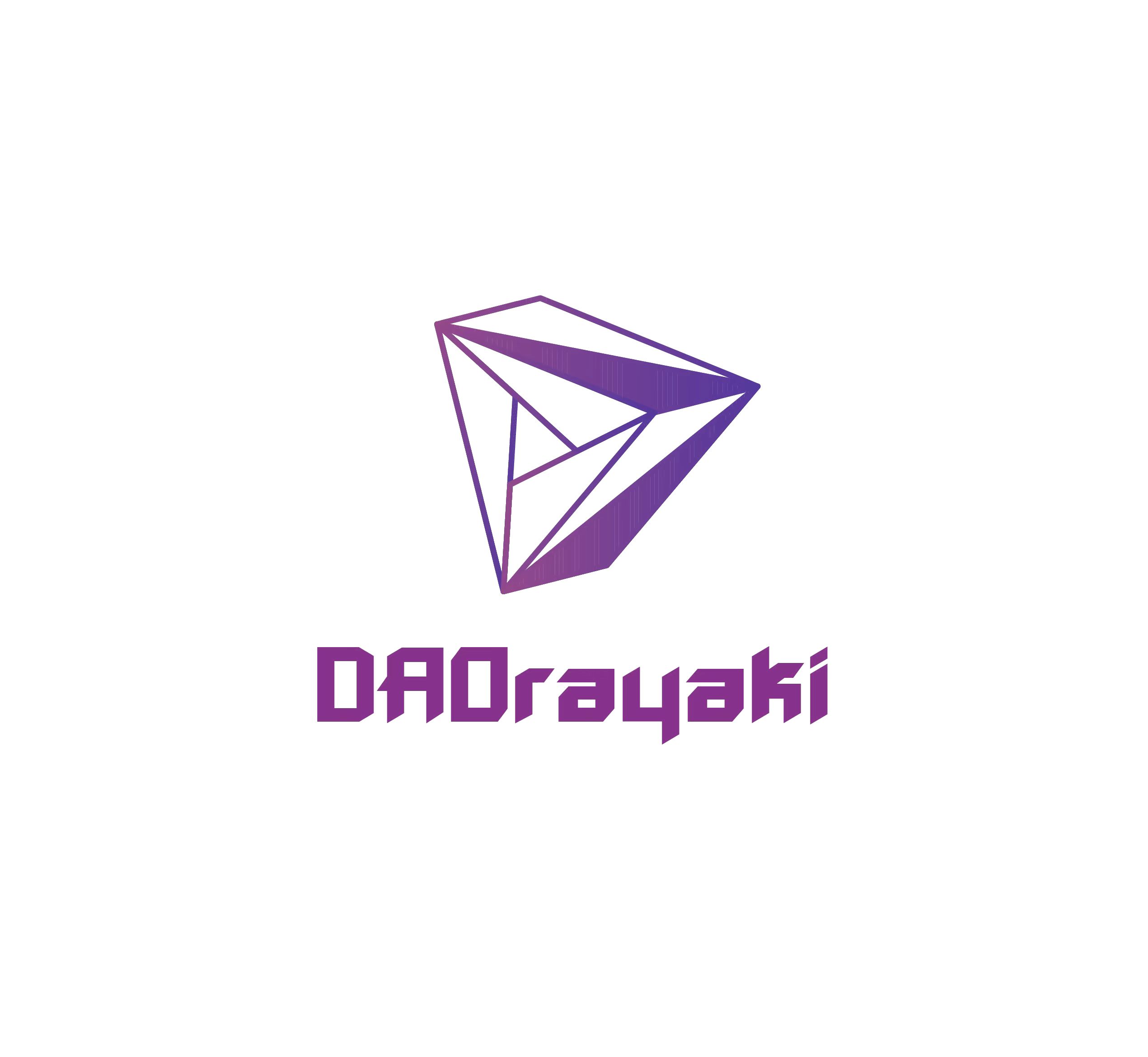Vitalik最新論文:去中心化社會——找尋Web3的靈魂(中)
原文作者: E. Glen Weyl, Puja Ohlhaver, Vitalik Buterin
——《老子》第六十二章
——《老子》第六十二章
——《老子》第六十二章
“道者,萬物之奧,善人之寶,不善人之所保”
大規模的非線性“神經網絡”模型(如BERT和GPT-3)也可以被SBTs轉換。這類模型利用大量公共或私人監控的數據來生成豐富的模型和預測,比如基於自然語言提示的代碼。大多數被監視的數據創建者不知道他們在創建這些模型中的角色,沒有為自己保留任何剩餘權利,並且被視為“附帶的”而不是關鍵的參與者。此外,數據收集使模型脫離了它們的社會背景,這掩蓋了他們的偏見和局限性,並削弱了我們補償它們的能力。隨著對數據可用性的要求越來越高,這些矛盾日益凸顯出來,新的倡議,如記錄數據來源的更為廣泛的說,SBTs可以讓我們有效地代表和管理處於完全私人和完全公共之間的任何資產和商品。在現實中,即使是個人消費的商品也有積極的溢出效應,就像能夠使消費者更好地對家庭或社區做出貢獻一樣,即使是全球最可用的公共商品(例如氣候),也不可避免地對一些人比其他人更有用(例如塞舌爾對西伯利亞)。同樣,人類的動機很少是完全自私或完全利他的,會有許多預先存在的合作模式,只是這種模式在有些社區少,有些社區多。
4.8 從私人和公共物品到復合型網絡物品
更為廣泛的說,SBTs可以讓我們有效地代表和管理處於完全私人和完全公共之間的任何資產和商品。在現實中,即使是個人消費的商品也有積極的溢出效應,就像能夠使消費者更好地對家庭或社區做出貢獻一樣,即使是全球最可用的公共商品(例如氣候),也不可避免地對一些人比其他人更有用(例如塞舌爾對西伯利亞)。同樣,人類的動機很少是完全自私或完全利他的,會有許多預先存在的合作模式,只是這種模式在有些社區少,有些社區多。
的錯誤,關鍵是更需要承認它實際上反映了我們應該利用和補償的部分合作。畢竟,我們從事的是鼓勵合作的事業。訣竅是使二次方機制與預先存在的合作網絡一起工作,糾正其偏見和過度協調的傾向。 SBTs提供了一種自然的方式,讓我們能夠使天平傾向於支持跨越差異的合作。正如諾貝爾獎獲得者埃莉諾-奧斯特羅姆所強調的那樣,問題的關鍵不在於協調公共產品本身,而在於,如何幫助由不完全合作但有社會聯繫的個人組成的社區克服他們的社會差異,並能在更廣泛的網絡中進行規模化的協調。
但是,與其把預先存在的合作視為我們應該"重寫"的錯誤,關鍵是更需要承認它實際上反映了我們應該利用和補償的部分合作。畢竟,我們從事的是鼓勵合作的事業。訣竅是使二次方機制與預先存在的合作網絡一起工作,糾正其偏見和過度協調的傾向。 SBTs提供了一種自然的方式,讓我們能夠使天平傾向於支持跨越差異的合作。正如諾貝爾獎獲得者埃莉諾-奧斯特羅姆所強調的那樣,問題的關鍵不在於協調公共產品本身,而在於,如何幫助由不完全合作但有社會聯繫的個人組成的社區克服他們的社會差異,並能在更廣泛的網絡中進行規模化的協調。
5 複合意義建構
通過揭示不同Souls/靈魂集之間的成員關係,SBTs允許我們對預先存在的合作進行折現,並以二次方的形式擴大在新興網絡中,把複合型的物品賦予更廣泛的利益群體,且由多樣化的成員的同意,而不是賦予物品狹窄意義的,由無辜過度協調(或故意共謀)的特殊利益集團的同意。相關折扣“最佳”的精確公式取決於模型細節,尚未研究,但我們在附錄中為進一步的研究提供了實驗的第一手資料。
5 複合意義建構
預測市場旨在聚合基於財富和風險偏好的信念,這些信念來自那些願意下注的人。但這種“適者生存”並不是聚合信念的理想方式。在一個零和遊戲中,一個交易者的收益就是另一個交易者的損失,它假定了一個普遍的預測能力是與“聰明的人”而不是“愚蠢的人”搏鬥的。雖然財富可能是某些能力和專業知識的代表,但對其他形式的相關專業知識的預測可能更可靠。在某個領域輸掉賭注的參與者,可能對另一個領域有更準確的信念。但是,預測市場有一個不幸的影響,它會讓那些有賭博傾向的人產生信念,讓贏了賭注的人變得富有,讓其他人變得貧窮,並阻止風險厭惡者的普遍參與。
預測市場則採取了相反的方法,人們對結果進行賭注,希望獲得經濟收益,完全依賴金融投機的經濟激勵("fructus"),而不綜合分析投注者的信念來產生可組合的模型。同時,這兩種範式產生的結論都被描述為"客觀"真理。人工智能模型被描述為“通用”或“普遍智能”,而預測市場被描述為將市場參與者的所有信念總結為一個數字:均衡價格。
一個更有成效的範式是避開這些極端,並吸取兩者的優點,同時彌補它們的弱點使其在廣度上更加豐富。我們建議將非線性人工智能模型的複雜性與預測市場的市場激勵相結合,將被動的數據勞動者轉變為主動的數據創造者。有了這種植根於數據創造者的社會性的豐富信息,DeSoc能夠釋放出比任何一種方法都更強大的複合型智能網絡。
5.1 從預測市場到復合預測
預測市場旨在聚合基於財富和風險偏好的信念,這些信念來自那些願意下注的人。但這種“適者生存”並不是聚合信念的理想方式。在一個零和遊戲中,一個交易者的收益就是另一個交易者的損失,它假定了一個普遍的預測能力是與“聰明的人”而不是“愚蠢的人”搏鬥的。雖然財富可能是某些能力和專業知識的代表,但對其他形式的相關專業知識的預測可能更可靠。在某個領域輸掉賭注的參與者,可能對另一個領域有更準確的信念。但是,預測市場有一個不幸的影響,它會讓那些有賭博傾向的人產生信念,讓贏了賭注的人變得富有,讓其他人變得貧窮,並阻止風險厭惡者的普遍參與。
,以及機器學習的隱私保護法,這些方法需要給那些產生數據的人以有意義的經濟和管理利益,並激勵他們合作生產出比他們單獨構建的模型更強大的模型。
SBTs可以開啟一類新型的豐富模型,並在預測能力和相對專業知識方面進行實驗。預測市場只得出一個數字,合約的價格,二次方投票給出了每個參與者對某一事件的概率的確切信念。 SBTs能夠在參與者的教育證書、會員資格和一般社會性的社會背景下進一步計算這些信念,以開發更好的加權(或非線性綜合)預測模型,這很可能在新的、未預見到的交叉點上浮現出新一代的專家預測者。因此,即使民意調查不能很好地聚集信念,也可以對民意調查進行回溯性研究,以揭示“更正確”的參與者的特徵,並在未來的民意調查中召集更有針對性的“專家” ,也許是在審議團隊的背景下。這些機制與我們在本文中倡導的機制密切相關。被相關分數折算的二次方機制可以將協調不良的自上而下的公共產品轉化為強大的、自下而上的複合網絡物品。同樣,它們也可以將基於零和預測市場的治理系統轉變為更多的正和意義上的決策,從而鼓勵揭示和綜合新的,更好的信息。
5.2 從人工智能到復合智能
大規模的非線性“神經網絡”模型(如BERT和GPT-3)也可以被SBTs轉換。這類模型利用大量公共或私人監控的數據來生成豐富的模型和預測,比如基於自然語言提示的代碼。大多數被監視的數據創建者不知道他們在創建這些模型中的角色,沒有為自己保留任何剩餘權利,並且被視為“附帶的”而不是關鍵的參與者。此外,數據收集使模型脫離了它們的社會背景,這掩蓋了他們的偏見和局限性,並削弱了我們補償它們的能力。隨著對數據可用性的要求越來越高,這些矛盾日益凸顯出來,新的倡議,如記錄數據來源的"數據集合表",以及機器學習的隱私保護法,這些方法需要給那些產生數據的人以有意義的經濟和管理利益,並激勵他們合作生產出比他們單獨構建的模型更強大的模型。
數據集合表
二級標題
隨著時間的推移,正如SBT將Soul/靈魂集群個體化一樣,它們也將模型個體化。將數據來源、治理和經濟權利直接嵌入模型的代碼中。因此,多智能體,就像人類一樣,建立了一個嵌入人類社會性的靈魂,隨著時間的推移,人類嵌入到多智能體中,每個智能體都有一個獨特的靈魂,與其他靈魂互補和合作。而且,在這一點上,我們看到了預測市場和人工智能範式的融合,一同朝著複合意義建構的方向發展。結合廣泛分佈的激勵措施和對社會背景的仔細跟踪,創造出多樣化的模型,將兩種方法的優點結合到一個比任何一種都更強大的技術範式中。
5.3 可編程的複合型隱私
複合智能體提出了關於數據隱私的重要問題。畢竟,要建立這樣強大的智能體,需要從大型數據集(如健康數據)中匯集跨個體的數據,或者捕捉不是人際關係而是共享的數據(如社交圖)。 “自主身份”的倡導者傾向於將數據視為私有財產:因為這種交互的數據是我的,所以我應該能夠選擇何時向誰披露。然而,就簡單的私有財產而言,人們對數據經濟的理解甚至少於對實體經濟的理解。在簡單的雙向關係中,比如婚外情,披露信息的權利通常是對稱的,通常需要雙方的許可和同意。正如學者海倫·尼森鮑姆(Helen Nissenbaum)所強調的,人們關注的不是“隱私”本身,而是在信息共享過程中缺乏對上下文所處背景的完整性了解。 “劍橋分析”醜聞主要是人們在未經朋友同意的情況下泄露自己的社交圖譜屬性和朋友信息。
與其將隱私視為可轉移的財產權,一種更有前景的方法是將隱私視為一個可編程的、鬆散耦合的權利束,允許訪問、改變或從信息中獲利。在這樣的範式下,每個SBT(例如代表憑證或訪問數據存儲的SBT)在理想情況下也將具有隱含的可編程產權,並能對構成SBT的一些基礎信息例如,持有者、他們之間的協議、 共享財產(例如數據)以及對第三方的義務等進行訪問。例如,一些發行人會選擇將SBTs完全公開,但一些SBTs,如護照或健康記錄,將是自我主權意義上的隱私,攜帶SBT的Souls/靈魂集群有單邊披露的權利。其他的,比如反映數據合作組織成員身份的SBT,因涉及到有多重簽名或更複雜的社區投票權限,所有或大多數SBT持有人必須同意才能進行披露。
和"usus"、"abusus "和"fructus "然而,DeSoc最大的優勢在於其網絡的可組合性。持續增加的回報和網絡的增長並不只是簡單地避免榨取租金的危險,而且還鼓勵嵌套網絡的擴散和交叉。一條路可能在兩個城市之間形成一個網絡。但如果與更廣泛的合作切斷,兩個合作的城市最終會遇到回報遞減的天花板--要么是因為擁擠(道路和住房),要么是因為枯竭(達到他們可以服務的人群的極限)。只有通過技術創新和日益廣泛的合作,哪怕這種合作是鬆散的。鄰近網絡的合作,以獲得新的回報來源,價值才能繼續成倍增長。一些合作將是有形的,逐步擴大跨空間的物理貿易。但更多的連接將是信息和數字的。隨著時間的推移,我們將看到物理和數字網絡之間新的合作矩陣,依賴並擴展它們所建立的社會互連。 DeSoc促成的正是這種交叉的、部分嵌套的、跨越數字和物理世界的不斷增長的網絡合作結構。
6 去中心化社會"usus "和"abusus"),同時又將用戶的注意力("fructus")拍賣給出價最高的人,即使是一個機器人。 SBTs有可能管理更健康的"注意力經濟",使Souls/靈魂集群有能力從他們的社交圖譜之外,甚至可能是機器人那裡過濾垃圾信息,同時提升來自真實社區和所需交叉點的溝通。聽眾可以更清楚地知道他們在聽誰的聲音,並能更好地將功勞分配給那些能夠激發洞察力的作品。這種經濟模式不是為了最大化用戶粘性而做的優化,而是為了通過正和協作創造出更有價值的共同目標而優化。這種通信渠道對安全也很重要。如上所述,“高帶寬”的通信通道對於幫助社區構建安全的基礎至關重要。
6 去中心化社會
Web3希望能廣泛地改造社會,而不僅僅是金融系統。然而,今天的社會結構,比如家庭、教會、團隊、公司、公民社會、名人、民主等這些關鍵詞,如果在他們所支持的更廣泛關係的虛擬世界(通常稱為“元宇宙”)中,原住民們沒有代表人類靈魂的東西,那這一切都毫無意義。如果Web3避開持久性身份、信任和合作模式以及可組合的權利和許可,我們將分別看到女巫攻擊、共謀和在有限經濟領域裡的完全可轉讓的私有財產等所有這些過度金融化的趨勢。
然而,DeSoc最大的優勢在於其網絡的可組合性。持續增加的回報和網絡的增長並不只是簡單地避免榨取租金的危險,而且還鼓勵嵌套網絡的擴散和交叉。一條路可能在兩個城市之間形成一個網絡。但如果與更廣泛的合作切斷,兩個合作的城市最終會遇到回報遞減的天花板--要么是因為擁擠(道路和住房),要么是因為枯竭(達到他們可以服務的人群的極限)。只有通過技術創新和日益廣泛的合作,哪怕這種合作是鬆散的。鄰近網絡的合作,以獲得新的回報來源,價值才能繼續成倍增長。一些合作將是有形的,逐步擴大跨空間的物理貿易。但更多的連接將是信息和數字的。隨著時間的推移,我們將看到物理和數字網絡之間新的合作矩陣,依賴並擴展它們所建立的社會互連。 DeSoc促成的正是這種交叉的、部分嵌套的、跨越數字和物理世界的不斷增長的網絡合作結構。"去中心化社會(DeSoc)":一種共同決定的社會性,其中Souls/靈魂集群和Communities 集群自下而上地召集在一起,作為彼此的新興屬性,在不同規模上產生復合型網絡物品。
我們強調複合型網絡物品是DeSoc的一個特徵,因為網絡是經濟增長最強大的引擎,但也最容易被私人行為者(如Web2)和強大的政府所俘獲。大多數重要的經濟增長來自於網絡收益的增加,即每一個額外的單位投入都會產生更多的產出。簡單的物理網絡的例子包括道路、電網、城市和其他形式的基礎設施,這些都是依靠勞動力和其他資本投入建立的。強大的數字網絡的例子包括市場、預測模型和建立在數據上的複合智能。在這兩種情況下,網絡經濟學明顯不同於新古典經濟學,新古典經濟學講究收益遞減,即每增加一個單位的投入,產出就會遞減,而私有財產會產生最有效的結果。私有財產應用於收益遞增的情況下會產生相反的效果,導致通過榨取租金來限製網絡的發展的現象發生。兩個城市之間的公路可以從貿易收益中釋放出越來越多的回報。但是,如果業主選擇在兩個城市之間的貿易中榨取租金,同樣的道路私有製也會扼殺增長。網絡的公共所有權也有其自身的危險性,容易被監管部門捕獲或資金不足。
當網絡既不被視為純粹的公共產品也不被視為純粹的私人產品,而是被視為部分和復合型公共物品時,具有越來越多的回報是最有效的。 DeSoc提供了一個社會基礎,用以分解和重新配置權利--使用權("usus")、消費權或破壞權("abusus")和收益權("fructus")--並使這些權利的有效治理機制能夠增強信任和合作,同時檢查共謀和俘獲。我們在本文中探索了幾種機制,例如基於社區的SALSA 和相關分數打折的二次方融資(和投票)。這種讓複合所有權變為第三種方式的行為,避免了收取私人租金的卡律布迪斯(Charybdis)和獲取公共監管的錫拉(Scylla)。
在很多方面,今天的DeFi是一個由收益遞減的私有財產模式,改造成收益遞增的網絡。建立在不信任的前提下,DeFi本質上局限於完全可轉讓的私有財產(例如,可轉讓代幣)領域,這些領域主要捆綁了“usus”、“busus”和“fructus”。往好了說,DeFi冒著通過收取租金來抑製網絡增長的風險,往壞了說,可能會導致反烏托邦式的監控壟斷,由“鯨魚”主導,它們在一場逐底競爭中收穫和吸收數據,就像Web2一樣。
DeSoc將DeFi控制和推測網絡價值的競賽轉變為自下而上的協調,從而建立、參與和治理網絡。至少,DeSoc 的社會基礎可以使DeFi 抗女巫(支持社區治理)、抗吸血鬼(內化正外部性以構建開源網絡)和抗共謀(保持網絡的去中心化)。有了DeSoc的結構性修正,DeFi可以支持和擴大多元網絡,廣泛賦予利益,這點正如大多數不同成員所同意的那樣,而不是進一步鞏固被狹隘利益所控制的網絡。
然而,DeSoc最大的優勢在於其網絡的可組合性。持續增加的回報和網絡的增長並不只是簡單地避免榨取租金的危險,而且還鼓勵嵌套網絡的擴散和交叉。一條路可能在兩個城市之間形成一個網絡。但如果與更廣泛的合作切斷,兩個合作的城市最終會遇到回報遞減的天花板--要么是因為擁擠(道路和住房),要么是因為枯竭(達到他們可以服務的人群的極限)。只有通過技術創新和日益廣泛的合作,哪怕這種合作是鬆散的。鄰近網絡的合作,以獲得新的回報來源,價值才能繼續成倍增長。一些合作將是有形的,逐步擴大跨空間的物理貿易。但更多的連接將是信息和數字的。隨著時間的推移,我們將看到物理和數字網絡之間新的合作矩陣,依賴並擴展它們所建立的社會互連。 DeSoc促成的正是這種交叉的、部分嵌套的、跨越數字和物理世界的不斷增長的網絡合作結構。
二級標題
二級標題
)的社會證明。 DeSoc授權Souls對他們自己的關係進行編碼,並共同創造多個屬性,而web2則通過不透明的算法將社會關係中介化或貨幣化,這可能會造成兩極分化、分裂和信息錯誤。 DeSoc避開了自上而下、不透明的社會信用體系。 Web2構成了它們的基礎。 DeSoc將Souls/靈魂集群視為代理,而web2則將Souls/靈魂集群視為對象。
駕照"駕照")的社會證明。 DeSoc授權Souls對他們自己的關係進行編碼,並共同創造多個屬性,而web2則通過不透明的算法將社會關係中介化或貨幣化,這可能會造成兩極分化、分裂和信息錯誤。 DeSoc避開了自上而下、不透明的社會信用體系。 Web2構成了它們的基礎。 DeSoc將Souls/靈魂集群視為代理,而web2則將Souls/靈魂集群視為對象。"點對點")的社會證明。 DeSoc授權Souls對他們自己的關係進行編碼,並共同創造多個屬性,而web2則通過不透明的算法將社會關係中介化或貨幣化,這可能會造成兩極分化、分裂和信息錯誤。 DeSoc避開了自上而下、不透明的社會信用體系。 Web2構成了它們的基礎。 DeSoc將Souls/靈魂集群視為代理,而web2則將Souls/靈魂集群視為對象。
相比之下,DeSoc是一種隨機的社會多元主義,一個由個人和社區組成的網絡,作為彼此的新興屬性,共同決定他們自己的未來。從web2來看,DeSoc的發展可以類比為幾個世紀的君主政體中流行的參與式政府的興起。參與式政府並非必然帶來民主,它還導致了共產主義和法西斯主義的興起。類似地,同樣地,SBTs並沒有使數字基礎設施本質上變得民主,而是根據Souls/靈魂集群和Communities/社區集群共同決定的內容來兼容民主。與Web2的獨裁主義和DeFi的無政府資本主義相比,開放這一可能性的空間是一個明顯的進步。
鯨魚"鯨魚"參考"擁有"實際上是人際關係的數據(如他們的社交圖)的多人之間的競標戰,以構建單獨的私人人工智能,與人類競爭,避免了未來競爭多個人工智能,從而增強人類的能力。
因此,DeSoc不需要變得完美來通過可接受的非烏托邦的測試。要成為一個值得探索的範例,它只需要比現有的替代品更好。儘管DeSoc有可能需要防範反烏托邦場景,但web2和現有的DeFi正陷入不可避免的反烏托邦模式,將權力集中在決定社會結果或擁有大部分財富的精英手中。 web2的方向是確定性的威權主義,加速了自上而下的監視和行為操縱的能力。今天的DeFi的方向名義上是無政府資本主義,但已經陷入網絡效應和壟斷壓力,這有可能使其中期道路以同樣的方式變成威權主義。
相比之下,DeSoc是一種隨機的社會多元主義,一個由個人和社區組成的網絡,作為彼此的新興屬性,共同決定他們自己的未來。從web2來看,DeSoc的發展可以類比為幾個世紀的君主政體中流行的參與式政府的興起。參與式政府並非必然帶來民主,它還導致了共產主義和法西斯主義的興起。類似地,同樣地,SBTs並沒有使數字基礎設施本質上變得民主,而是根據Souls/靈魂集群和Communities/社區集群共同決定的內容來兼容民主。與Web2的獨裁主義和DeFi的無政府資本主義相比,開放這一可能性的空間是一個明顯的進步。
參考
一級標題"參考"[8]我們說
無辜
,是因為高度合作的團體會自然的尋求推進他們的利益,這很可能是為了他們的集體利益的影響。
[9] 在二次方規則下,團隊成員可以購買一份合同,在事件發生的條件下支付X美元,但成本為(X^2)/2美元。例如,如果事件發生,設定X=0.5的個人將獲得0.5美元,金額由投票者支付,且無論如何都要支付至少0.125美元。



